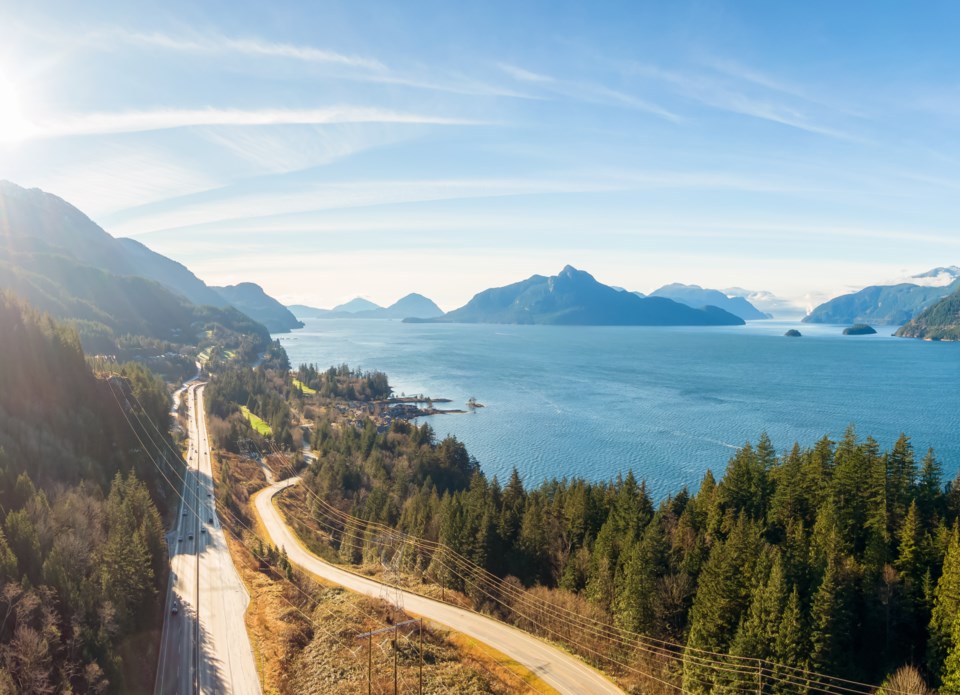Since the invention of the automobile, collisions between people and wildlife have been a global problem. Seeing animals of every sort lying dead on the highway is a sight most drivers are all too familiar with, and the Sea to Sky Highway is no exception. According to new data released by the Ministry of Transportation and Infrastructure (MOTI), approximately a dozen animals are killed annually between Horseshoe Bay and Mount Currie.
“Over the past three years, an average of 10 animals a year have been reported to the ministry’s Wildlife Accident Reporting System as killed in collisions on Highway 99 between Horseshoe Bay and Pemberton, nine in 2020 and 2021, and 13 in 2022,” a MOTI spokesperson said in an email.
Two martens, four bears, six raccoons, 17 deer, and one unidentified animal made up the 31 critters officially listed as killed by motor vehicles over the last three years. While the data may be startling, it only paints a small picture of how many animals are lost annually on the province's highways.
The Insurance Corporation of British Columbia (ICBC) reports that about across the province annually, with about 1,000 of those leading to injuries for the drivers and a little over half, 5,700, resulting in death for the animals. Between 80 and 85 per cent of the incidents involved deer.
The cost of collisions with wildlife is high for both the insurance provider and the public. In 2018, ICBC spent $41 million on claims related to injuries from wildlife incidents, while the Province of British Columbia lost an estimated $40 million from potential hunting revenue in 2007 and up to $390 million in possible wildlife viewing tourism revenue, according to the (WCCP).
Wildlife deaths underreported
WCCP finds that the number of animals killed is underreported, and that the number of animals lost yearly is significantly higher. Typically, ICBC only receives reports on collisions with wildlife if significant damage to a vehicle requires repairs. In numerous cases, animals can be struck by an automobile and manage to get away from the highway, only to later succumb to their injuries. The organization estimates that the number of animals killed is under-reported by 65 to 75 per cent, putting the actual number of wildlife killed on B.C. roads closer to 16,400 to 23,000 annually, which, if applied to the Sea to Sky, would result in an additional 124 animals lost over the last three years.
The wildlife collision data also leaves out incidents involving smaller animals like birds, amphibians, and reptiles, as the primary focus is on larger animals, such as deer and coyotes. rescue support centre manager Jackie McQuillan finds that automobile incidents make up a significant amount of their Lower Mainland/Sea to Sky patient load.
“Over the last few years and from last year, about seven per cent of our patient loads, or birds, were suspected of being hit by cars, which was around 360 patients,” McQuillan said. “The number, of course, that are having automobile impacts would be much larger than that number, because many of them are not going to survive and are not going to be brought to us. So it's good to keep in perspective that that number probably is a major under-representation of the number it's happening to.”
McQuillan noted that automobile incidents occasionally lead to situations that require human assistance, such as in the case of orphaned wildlife.
“We get animals that are orphans because their parents have been hit by cars, so maybe they weren't directly injured by a car, but I'm sure you've heard the stories of mum and dad taking her 10 or 12 ducklings across the highway and mum gets hit, and now there are 10 babies that need help."
Drivers can help reduce collisions with wildlife by slowing down, being attentive to their surroundings, and knowing what to do if faced with a situation requiring action.
“I think that sometimes people aren't aware that some basic changes in their driving habits can really benefit wildlife, like even just slowing down,” McQuillan said. “We talk about that quite often, but it's something that can be huge, because having that extra bit of reaction time to anticipate what's going to come out of the forest adjacent to the road and still have time to react can mean the difference between life and death for that animal.”
For more information on what to do if faced with wildlife on the roads, checkout




